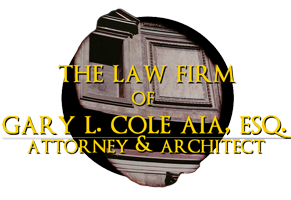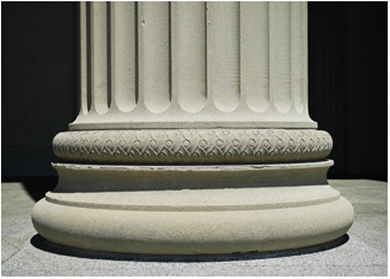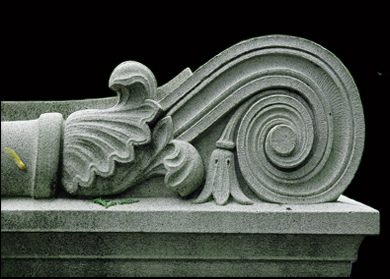Mediation and Arbitration Essentials for Architects, Engineers & Contractors
By Gary L. Cole AIA, Esq.
[Gary L. Cole AIA, Esq. is Chicago-based Illinois and Florida-licensed attorney and Illinois-licensed architect. He practices construction law, is a construction and commercial arbitrator and mediator, and is an historic preservation attorney and expert witness and consultant. He can be reached at www.garylcolelaw.com]
With civil litigation’s rising costs, mediation and arbitration are growing in popularity as potentially quicker and more cost-effective alternative dispute resolution forums. Architects, engineers and contractors who incorporate well-considered mediation and arbitration clauses into their contracts and service agreements may have an advantage over those who do not, and, who later find themselves embroiled in costly and protracted litigation.
Mediation and arbitration, however, differ fundamentally in their approaches and some conflicts may be better resolved in one forum over the other.
Mediation Basics
Broadly speaking, mediation is a more informal dispute resolution process than arbitration in which a neutral party – a mediator – assists two or more parties in reaching a negotiated settlement on their own.
Mediation is private, confidential and generally non-binding; unless a settlement agreement is entered into by the disputing parties. Many contracts, especially design and construction agreements, contain requirements that parties attempt to resolve any disputes through mediation as a prerequisite to pursing arbitration and/or litigation.
Mediation can occur through a process known as facilitative mediation, in which parties . . .
Read MoreA Call for Replacing the Secretary’s Standards with a Model Historic Building Code
By Gary L. Cole AIA, Esq.
“. . . The Standards are neither technical nor prescriptive, but are intended to promote responsible preservation practices that help protect our Nation’s irreplaceable cultural resources. For example, they cannot, in and of themselves, be used to make essential decisions about which features of the historic building should be saved and which can be changed. But once a treatment is selected, the Standards provide philosophical consistency to the work.” Introduction to Standards and Guidelines. National Park Service.
On January 25, 2013, former U.S. Secretary of the Interior Ken Salazar asked the National Park Service (NPS) to conduct an internal review of the Federal Historic Preservation Tax Incentives Program (HTC) to “. . . make sure that we are doing everything we can to work in partnership with local communities, developers and other stakeholders to provide guidance and promote restoration efforts.”
At the time, this was welcome news, though as a former Illinois State Historic Preservation Office (SHPO) staff architect charged with interpreting the Secretary of the Interior’s Standards for Rehabilitation (Standards) for the HTC and other historic rehabilitation tax-incentive programs and now as a private practice attorney, I tempered my expectations. Constructive governmental reform is rarely a swift or revolutionary process.
And, in 2024, more than ten years after former Secretary Salazar’s request to the NPS, little, if anything, has been done to accommodate that mandate.
Many of this country’s historic preservation laws and programs are nearly old enough for their own historic designations and are in dire need of rehabilitation. The historic property-owning public would certainly appreciate a little regulatory streamlining of the HTC program, starting with eliminating application fees for the redundant SHPO and NPS review process.
Meaningful reform also includes reforming how historic properties and communities attract reinvestment capital for business growth, job creation, and local economic stability. This reform should start by relegating the Standards to their stated and intended role of simply providing philosophical consistency for historic rehabilitation efforts. It should not continue to serve as a de facto historic building code enshrined as federal regulations and incorporated directly into federal and state historic preservation laws and programs, nor local historic preservation ordinances, including those of Certified Local Governments.
Hardly changed since their inception in 1977, the Standards comprise a ten-point manifesto of historic preservation’s essential rehabilitation doctrine as enforced by federal, state, and local historic preservation regulatory entities. Though most of the Standards have retained their relevance in varying amounts, some have not. The second part of the unloved Standard No. 9, for example, is the product of an equally unloved 1970s Modernist bias and should be eliminated . . .
Read More
Using BIM in Construction Arbitration and Mediation?
By Gary L. Cole AIA, Esq.
Interesting article HERE, and I agree, BIM has unique possibilities in arbitration and mediation as an evidentiary tracking tool, but in different ways.
In construction arbitration, comparing a contractual scope of work — including one that evolved during a project — with the work completed might provide the parties and the arbitrator with a more objective and empirical measuring stick for comparing the parties’ intent with a project’s completion.
In construction mediation, especially in “evaluative” mediation, the same holds, but the BIM findings also provide the mediator with more tools to bring the dispute to settlement, mainly when those findings are used with the mediator’s summary of the strengths and weaknesses of each parties’ case, as presented to each party in confidential ex parte discussions.
However, in both arbitration and mediation, using a tool like BIM most effectively still requires that counsel for the parties, the arbitrator, and the mediator have the technical expertise to understand the kind of evidence BIM provides – and the ability to give that evidence the weight it does or does not deserve, depending on the dispute.
Read More


